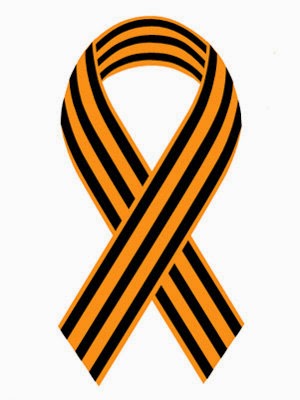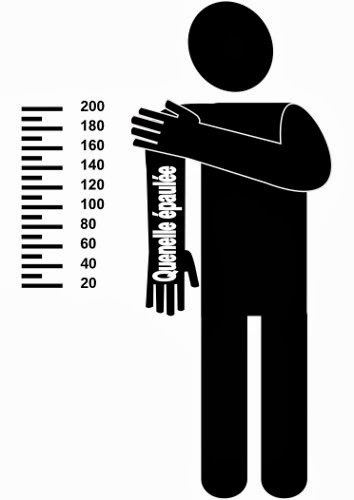The Lieberman-Kyle amendment has just passed the Senate overwhelmingly after two sections were removed to satisfy Democrats that it will not serve as a backdoor authorization for war against Iran, using U.S. forces operating in Iran. Even after that compromise, it remains a poison chalice, because it endorses a set of "findings" that are fundamentally false and which are being used by the administration to lay the groundwork for a more aggressive policy toward Iran .
The amendment is based on the Bush administration's proxy war narrative which has been filling the news media for the past nine months. It cites General Petraeus's classic statement of the proxy war argument of September 12: "[I]t is increasingly apparent...that Iran through the use of the Iranian Republican [sic] Guard Corps Quds Force, seeks to turn the Sh'ia militia extremists into a Hezbollah-like force to serve its interests and fight a proxy war against the Iraqi state and coalition forces in Iraq".
It is not unreasonable to view the proxy war narrative as the equivalent for Iran of the infamous White House Iraq Group's carefully contrived -- and stunningly successful -- fall campaign in 2002 to prepare public opinion to support an invasion of Iraq.
The following six points summarize some -- but certainly not all -- of the evidence contradicting the line on which the poisonous Liberman-Kyl amendment is based.
1. The administration has not come forward with a single piece of concrete evidence to support the claim that the Iranian government has been involved in the training, arming or advising of Iraqi Shiite militias.
o At the February 11, 2007 briefing, officials displayed one EFP and some fragments but did not claim that there was any forensic evidence linking that or any other AFP to Iran.
o One of the briefers admitted that it was only Iraqi smugglers who brought weapons into Iraq, explaining why no direct Iranian involvement could be documented.
o The official briefer who was a specialist on explosives, Maj. Marty Weber, claimed in a later interview that the use of "passive infrared sensors" in the deployment of EFPs in Iraq was "one of the strongest markers of Iranian involvement" in the traffic. But he admitted in the same interview that the electronic components needed to make the sensors found in Iraq were "easily available off the shelf at places like RadioShack.
o Another official who participated in the briefing, Maj. Gen. William B. Caldwell IV, denied that the military was claiming that Iran was behind the traffic in arms to Iraq. He said in a follow-up press briefing on February 14, "What we are saying is that within Iran, that these EFP component parts are being manufactured. Within Iran weapons and munitions are being manufactured that are ending up in Iraq. And we are asking the Iranian government to assist in stopping that from happening. There's no intent to do anything other than that."
o Although one of the official briefers said shipments of EFPs had been intercepted at the border in 2005, only one press report about such a border interceptions has appeared, and there was no indication that such interceptions had produced any evidence of Iranian involvement. On the contrary, it quoted "coalition officials" as saying there was "no evidence to suggest that the government in Tehran is facilitating the smuggling of shape charges into Iraq." Despite that alleged interception, Pentagon spokesman Lawrence DiRita and Brig Gen. Carter Ham, deputy director for regional operations for the Joint Staff, continued to deny any knowledge of official Iranian complicity in EFP or any other arm supplies.
o Despite interrogations since last spring of a top official of an alleged Iraqi EFP network and the Hezbollah operative who was a liaison with the organization, Maj. Gen. Rick Lynch, the U.S. Commander for southern Iraq, where most of the Shiite militias operate, admitted in a July 6 briefing that his troops had not captured "anybody that we can tie to Iran"
o On September 8, the commander for the northern region of Iraq, Maj. Gen. Thomas Turner II, admitted in a press briefing, "I don't think we have any specific proof of Iranians in our area other than reports. We have discovered caches....It has not been a lot. We have seen some evidence of some weapons that were employed against coalition forces that were made in...Iran, where they are coming from across the border, we're not sure."
o Despite the assertion by Gen. David Petraeus on September 12, quoted in the proposed Lieberman-Kyle amendment, that the U.S. military obtained evidence of the complicity of Iranian officials in arming and training Shiite militias from interrogations of the above detainees, it has not produced wither detainee or any transcript of the interrogations. Nor has it released a direct quote from either detainee. No apparent intelligence reason exists for withholding such evidence from Congress and the public.
o Despite Petraeus' assertion in September that the United States obtained "hard evidence" incriminating Iran from computer hard drives seized when the above detainees were captured March 22 , none of the documentation has been made public, nor have any specifics have been provided on what the files show. Earlier both Petraeus and Brig. Gen. Kevin Bergner had discussed the contents of the 22-page memorandum as detailing the planning preparation, approval and conduct of military operations by the Shiite militia organization but without claiming that it showed any Iranian role in any of those activities.
2. The U.S. intelligence community has not endorsed the argument being made by some in the Bush administration that the Iranian government was responsible for the rise in Shiite military activity in Iraq.
o The National Intelligence Estimate, a brief summary of which was released to the public February 2 contradicted the official argument, stating, "Iraq's neighbors influence, and are influenced by, events within Iraq, but the involvement of these outside actors is not likely to be a major driver of violence or the prospects for stability because of the self-sustaining character of Iraq's internal sectarian dynamics."
o Instead of stating clear that Iran had provided weapons or training to Shiite militias, the NIE offered a more ambiguous formula that "Iranian lethal support for select groups of Iraqi Shia militants clearly intensifies the conflict in Iraq." That formula, according to veterans of the NIE process, probably represents a negotiated compromise, indicating that some agencies refused to endorse the claim that Iran was supply weapons to Iraqi Shiites.
3. The main argument made in the February 11, 2007 briefing for an Iranian official role in providing EFPs to Shiite militias -- the allegation that only Iran had the capability to manufacture EFPs or components for EFPs that can penetrate U.S. armor -- was quickly proven to be untrue.
o As early as mid-2005, U.S. military intelligence officials had already concluding that they believe the technology for making such armor-penetrating bombs was "spreading among a variety of insurgent groups," obviously including Sunni insurgents with no ties to Iran or Hezbollah. At least one insurgent cell in Baghdad was already "attempting to make the charges locally."
o Israeli intelligence reported that Hamas guerrillas manufactured high grade EFPs during 2006 which were used in attacks on Israeli Defense Forces in four separate incidents in September and November 2006. The shaped charges penetrated eight inches of steel armor.
o Senior military officials in Baghdad told a reporter days after the February 11 briefing that U.S. forces had been finding an "increasing number of advanced roadside bombs being not just assembled but manufactured in machine shops." One official was quoted as saying that the impact of those Iraqi-machined EFPs on armored vehicles "isn't as clean but they are almost as effective" as the EFPs being imported.
o Journalist Andrew Cockburn reported in February that in November 2006 U.S. troops raiding a Baghdad machine shop had discovered a pile of copper discs "stamped out as part of what was clearly an ongoing order"
o Maj. Marty Weber, the explosives expert who was one of the three briefers in the February 11 briefing, admitted in an interview with The New York Times less than two weeks later that "You can never be certain" that the cooper discs for the EFPs could not be manufactured with the required precision in Iraq.
o U.S. troops found a cache of components, including concave copper discs, for making EFPs in February 2007, in which the PVC tubes of varying widths appeared to have come from the open market, raising the likelihood that the liners were being manufactured locally so that they would be the right size to fit the discs.
o Another bomb-making factory discovered by U.S. troops in late February was reported to have forced U.S. officials to "reassess their belief that such bombs were being built in Iran and smuggled fully assembled into Iraq."
4. U.S. and British Military officers and civilian officials have expressed doubt that EFPs and other armaments in the hands of Shiites have actually come from Iran or that Iranian Quds force personnel have been involved in the supply.
o British Defence Secretary Des Browne said in an interview in August 2006, "I have not seen any evidence -- and I don't think any evidence exists -- of government-supported or instigated armed support on Iran's part in Iraq."
o Lt. Col. David Labouchere, commander of a few hundred British troops which began in late August 2006 to search the Iran-Iraq border for evidence of Iranian supply of weapons to Iraqi Shiites, said in October, "I suspect there's nothing out there. And I intend to prove it."
o "[S]ome military analysts have concluded there is no concrete evidence of...a link" between the Revolutionary Guard Corps and the Shiite militias fighting U.S. troops, according to a Washington Post report published August 20, 2007.
5. The Quds Force of Islamic Revolutionary Guard Corps, which the administration has claimed is the instrument of the alleged Iranian "proxy war" in Iraq, has apparently been withdrawn from Iraq.
o In the same testimony to the House Armed Services and Foreign Affairs Committees on September 11 in which he stated the proxy war argument, Gen. David Petraeus also said, "[T]he Qods Force itself -- we believe, by [and] large, those individuals have been pulled out of the country, as have the Lebanese Hezbollah trainers that were being used to augment that activity.
6. There is a substantial body of evidence that the Hezbollah in Lebanon -- not Iran -- has been the main source, if not the only source, of EFPs and other weapon used by Shiite militias in 2006 and 2007.
o Hezbollah was using EFPs to attack Israel Defense Forces armored vehicles as early as 1997 and provided EFP expertise to Palestinian militant groups after the start of the Intifada in 2000 (Michael Knights, Jane's Intelligence Review).
o Iraqi and Lebanese officials told a reporter in mid-2005 that Iraqi Shiite fighters had begun in early 2005 "copying Hezbollah's techniques in building roadside bombs and carrying out sophisticated ambushes." Those Hezbollah techniques included "shaped charges" (later renamed explosively formed penetrators by U.S. officials), according to those same officials.
o Hezbollah's CD-Rom instructional videos were captured in Iraq rather than Iran's, according to Michael Knights.
o All of the weapons systems captured in Iraq that are alleged to have been provided by Iran, including EFPs and 240 mm rockets, have been in the Hezbollah arsenal, as indicated by many sources on the weapons used by Hezbollah against Israel.
o One of those weapons systems, the RPG-29, which was used by Shiite militias against an American M-1 tank, is not manufactured by Iran and is known to have been acquired by Hezbollah from Syria rather than from Iran.
o There was reportedly intelligence in 2006 that Iran shipped machine tools to Lebanon that could be used to make EFPs.





